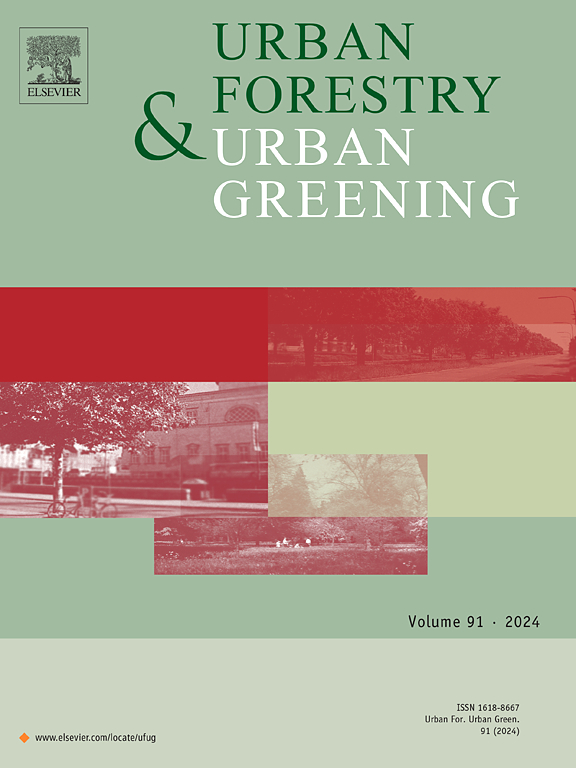Exploring the interactive effects of greenspace morphology and air pollutant on tuberculosis treatment outcomes: A comparative analysis between urban and rural areas in China
IF 6
2区 环境科学与生态学
Q1 ENVIRONMENTAL STUDIES
引用次数: 0
Abstract
Tuberculosis (TB), particularly pulmonary tuberculosis (PTB), remains a major public health issue in China. It ranks as the second-leading cause of infectious disease mortality in China. Previous studies have documented the impacts of particulate matter with diameters ≤ 2.5 µm (PM2.5) and greenspace on TB outcomes independently. However, the interaction effects between greenspace morphology and PM2.5 on TB risk, especially across urban and rural contexts, remain unclear. To address this knowledge gap, we conducted a Cox proportional hazards regression analysis using data from 42,331 PTB patients in Zhejiang Province between 2015 and 2019. Our objective was to explore the influence of greenspace morphology on PTB treatment success in relation to PM2.5, with a specific emphasis on elucidating urban–rural disparities. The results revealed a significant interaction between greenspace morphology and PM2.5. This interaction impacted PTB treatment success differently across urban and rural settings at varying spatial scales. Specifically, in urban areas, while greenspace morphologies did not exhibit significant effects at the community level, the percentage of greenspace and the mean area at the block level significantly influenced PTB treatment success. Conversely, in rural areas, all types of greenspace morphologies showed significant effects at the community level, except for the mean area, which was not significant at the block level. To enhance the treatment success of PTB patients, we recommended increasing the number of greenspaces at the community level while also improving their size at the block level in urban areas. In rural areas, efforts should focus on maintaining favorable greenspace morphologies (except for mean area) at the community level and enhancing them while simultaneously reducing PM2.5 levels at the block level. These findings not only highlight the importance of mitigating health inequities between urban and rural areas, but also provide insights for developing targeted greenspace strategies aimed at promoting successful PTB treatment.
求助全文
约1分钟内获得全文
求助全文
来源期刊

Urban Forestry & Urban Greening
FORESTRY-
CiteScore
11.70
自引率
12.50%
发文量
289
审稿时长
70 days
期刊介绍:
Urban Forestry and Urban Greening is a refereed, international journal aimed at presenting high-quality research with urban and peri-urban woody and non-woody vegetation and its use, planning, design, establishment and management as its main topics. Urban Forestry and Urban Greening concentrates on all tree-dominated (as joint together in the urban forest) as well as other green resources in and around urban areas, such as woodlands, public and private urban parks and gardens, urban nature areas, street tree and square plantations, botanical gardens and cemeteries.
The journal welcomes basic and applied research papers, as well as review papers and short communications. Contributions should focus on one or more of the following aspects:
-Form and functions of urban forests and other vegetation, including aspects of urban ecology.
-Policy-making, planning and design related to urban forests and other vegetation.
-Selection and establishment of tree resources and other vegetation for urban environments.
-Management of urban forests and other vegetation.
Original contributions of a high academic standard are invited from a wide range of disciplines and fields, including forestry, biology, horticulture, arboriculture, landscape ecology, pathology, soil science, hydrology, landscape architecture, landscape planning, urban planning and design, economics, sociology, environmental psychology, public health, and education.
 求助内容:
求助内容: 应助结果提醒方式:
应助结果提醒方式:


